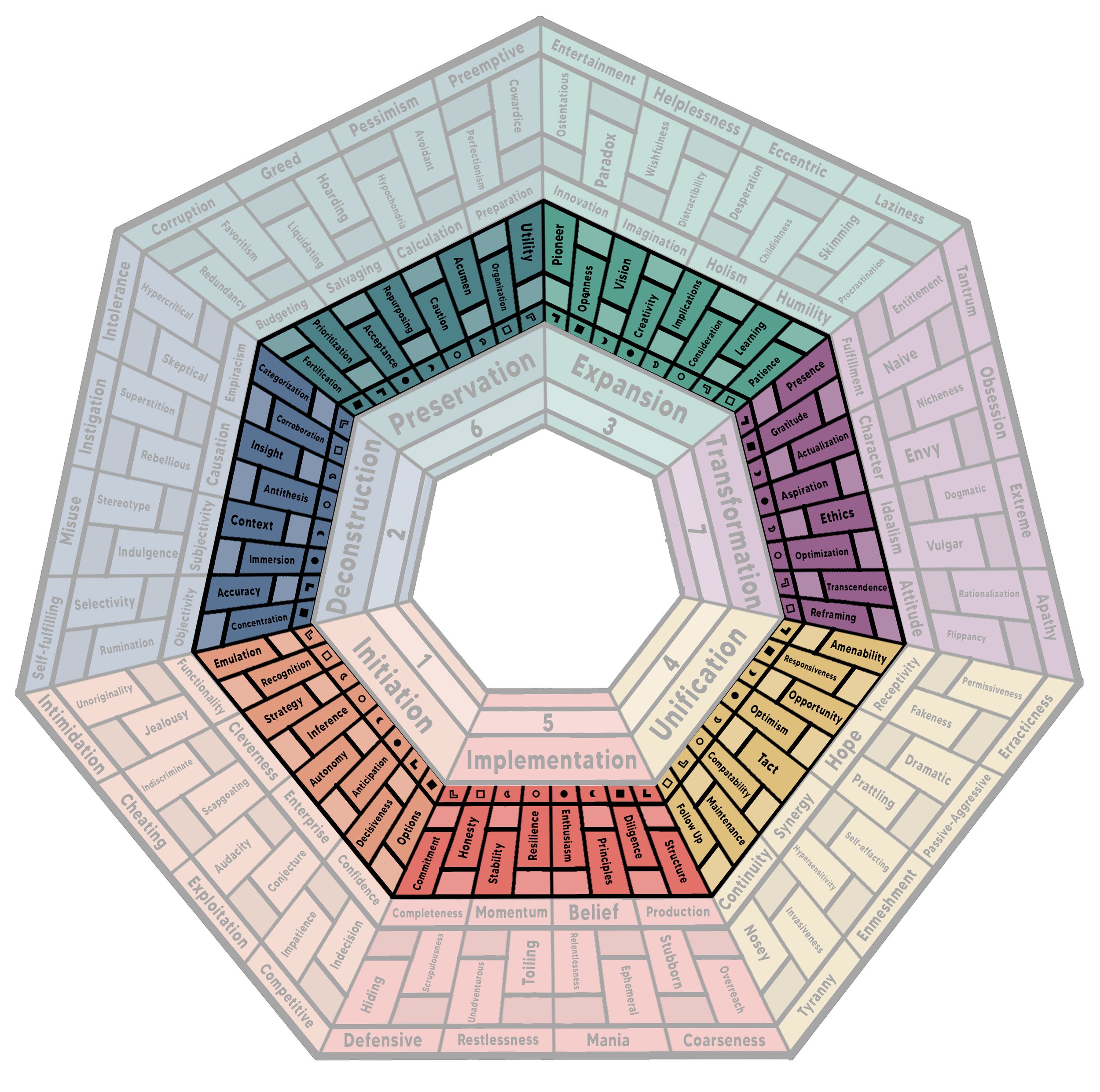Intro to Anatomy of Mind and Emotion
In 1999 a $125 million NASA spacecraft destined for mars crashed. The problem was that different engineers were using different methods for measuring distance. The difference between a meter and a yard is only about 8%, but that was enough to make the mission fail. Similarly each person has different ways of measuring risk and value, and those differences can cause communication or cooperation failures.
Differences in measurements change what a person experiences and how they make decisions. What is being measured and evaluated is not only different between people but can be opposite. What is perceived is the direction of an action; what is decided, is what direction to go. There are seven options for direction:1) Initiate 2) Deconstruct 3) Expand 4) Unify 5) Perpetuate 6) Separate 7) Transform
Each action has two opposite actions; for example “separate” has the opposites “unify” and “perpetuate.” These actions are suggestions from deep within the psyche that are intuitive or unconscious. Their role is to suggest the general direction that is meaningful to take. These seven actions are relayed from the intuitive or unconscious part of the psyche as emotions. Though emotions can be perceived as negative, emotions are fundamentally positive because they are a suggestion of a meaningful direction to take. This direction at times is not immediately apparent which can be frustrating, and incorrect assumptions about what the emotion implies about your nature or the nature of the suggested action can cause internal resistance. This internal resistance typically occurs most often in the directions or actions least used. The less each of the seven emotions is used, the less likely someone is to use them. This bias creates not only a preference towards certain actions, but strong preferences against other actions.
This strong preference for or against each of the seven emotions/actions is evident from earliest memories to present fears, stressors, and aspirations. There are many ways to see these preferences or themes, one is the type of role they typically take.
1) Charismatic or Confident
2) Intelligent or Insightful
3) Creative or Well-rounded
4) Kind or Social
5) Reliable or Hard Working
6) Prepared or Organized
7) Wise or Majestic
Another way that Action/Emotion preference is seen is in how someone does their to-do list.
Each action or emotion is measuring or optimizing for different aspects:
1) Functionality 2) Accuracy 3) Perspective 4) Connection 5) Stability 6) Preservation 7) Direction
Each of these aspects have four different components represented by two dichotomies.
These seven actions/emotions and the four components combine to make twenty eight general tools. These General tools are steps in perceiving and processing life. These steps could be seen as a series of questions.
The four general tools or components of each of the seven actions or emotions can be split into perceiving tools and evaluating tools. Each tool used out of context is considered a weapon.
Just as the seven actions or emotions have opposites, the tools have opposites as well. A preference for or against one tool or weapon will have an inverse impact on the tool or weapon opposite to it.
The inner ring is composed of the general and specific tools.
These are the general tool which separate each of the 7 emotions/approaches into 2 dichotomies: Concrete vs Abstract, and Asset-appreciating vs Risk Assessing.
These are the specific tools, which is further separated into perception vs prioritization, or raw data vs refined data.








